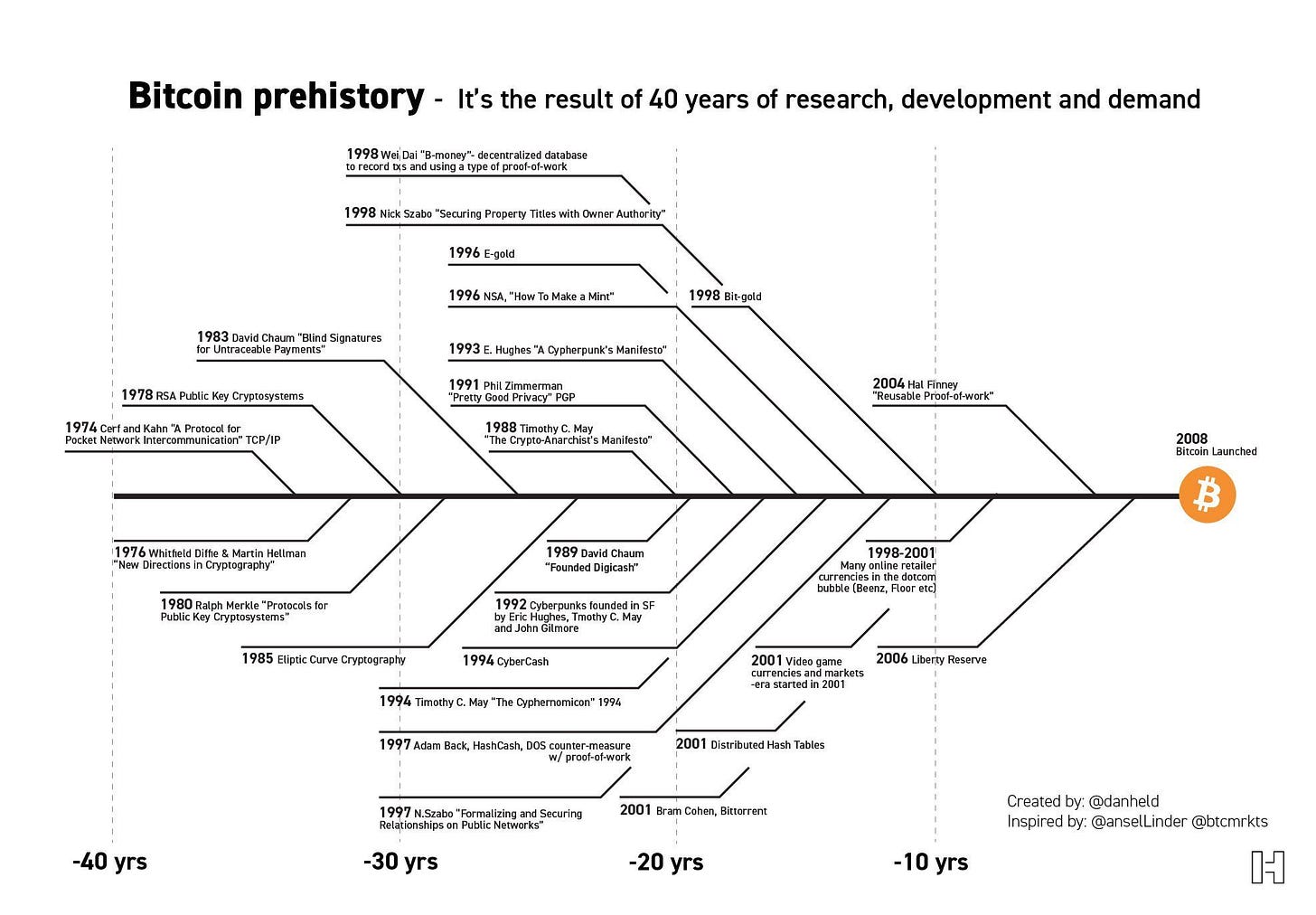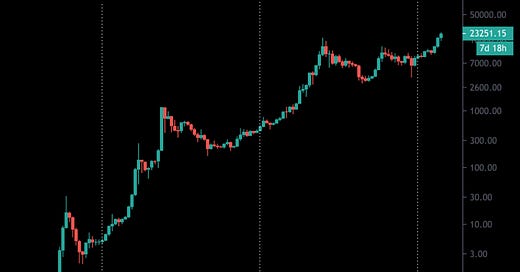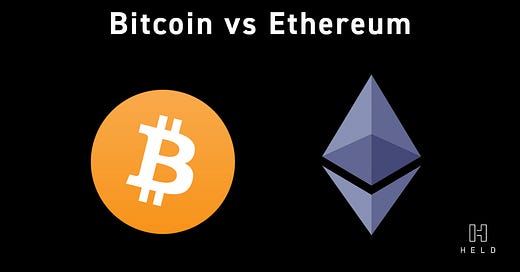

Discover more from The Held Report
An old system crumbles
Satoshi published the whitepaper on 10/31/2008. Right at the moment of peak despair during the 2008 financial crisis. Trust had been lost in a world that ran on trust.
But why October 31st? Why that date specifically? It certainly wasn’t because Satoshi was a fan of halloween, it must have had a deeper meaning. With all of his actions, Satoshi demonstrated a careful precision.
Satoshi had been working on Bitcoin for at least a year and a half before publishing the whitepaper.
“I believe I've worked through all those little details over the last year and a half while coding it, and there were a lot of them. The functional details are not covered in the paper, but the sourcecode is coming soon” - Satoshi Nakamoto
On August 18, 2008 Satoshi registers registers Bitcoin.org through anonymousspeech.com.
Satoshi was ready and waiting to hit the send button throughout 2008. What was so special about October 31st?
Out with the old, in with the new
I believe that Satoshi published the Bitcoin white paper on 10/31 as a hat tip to the ancient Gaelic festival of “Samhain” which was also the date in which Martin Luther nailed his 95 Theses to a church door. Both represent an end of the old and the beginning of the new.
Samhain represented the end of harvest season, and the beginning of winter.
The early Catholic church, in an attempt to gain believers, adopted some of the festivals such as Samhain, and in 835 created “All Saints Day” to coincide on 10/31. This is what we call “Halloween” or “All hallows’ eve” a major holiday in the Catholic world.
On October 31, 1517 Martin Luther nailed his 95 Theses onto the doors of the Castle Church (dedicated to All Saints). Luther was outraged by the idea that sinners would be able to reduce their sins through payments or unpaid work. Under the Pope, these were considered part of the church treasury, which allowed those in power to continue their lavish lifestyle at the expense of the masses. Luther undermined the authority of the Pope through his 95 Theses, starting a process of reformation. Luther’s ideas became very popular, spreading around the world through the newly invented printing press changing the course of the world forever.
Similarly, Satoshi was outraged at the massive breach of trust by existing financial institutions:
“The root problem with conventional currency is all the trust that’s required to make it work. The central bank must be trusted not to debase the currency, but the history of fiat currencies is full of breaches of that trust. Banks must be trusted to hold our money and transfer it electronically, but they lend it out in waves of credit bubbles with barely a fraction in reserve.” — Satoshi Nakamoto
Satoshi used 40 years worth of technological advancements, and combined them to create Bitcoin. Bitcoin’s blockchain enabled it to be accessible and transmittable to anyone in the world, just how the printing press enabled the spread of Martin Luther’s ideas.
Both Satoshi and Luther had carefully chosen October 31st to announce their ideas, symbolizing death and renewal. Both saw the imprisonment of people by these legacy systems, and both suggested ousting the existing authority as the solution to the problem.
Bitcoin marks the end of fiat, and the beginning of a new monetary standard. Let us go forth boldly, and build a new world.
“The present is theirs; the future, for which I really worked, is mine.” - Nikola Tesla
Happy new year, and happy new financial system!
HODL,
Dan












An incredibly thoughtful and efficiency piece , what an aspirational way to start a powerful new decade.
my wish this year is to be ur friend <3...at least on twitter :)
love ur work, love ur ideology, suits mine like big time....wanna work with u for a brighter future...we aim to be interstellar species one day, with decentralized money all around our solar system :)
@dzejsonac